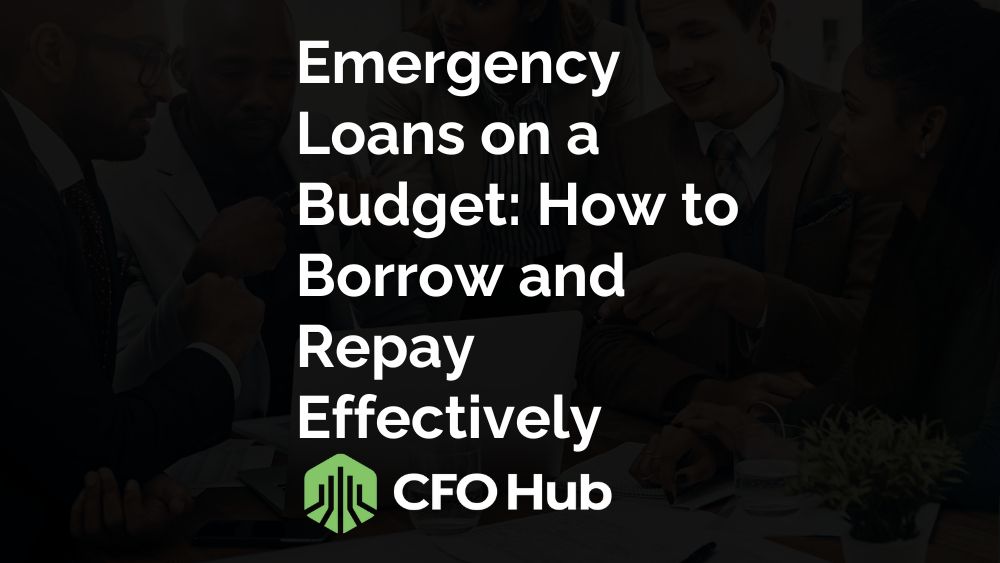Emergency Loans on a Budget: How to Borrow and Repay Effectively
An emergency loan is designed for unexpected situations requiring immediate cash. It involves lenders providing a lump sum upfront, which borrowers repay over a set period based on agreed terms. Emergency loans can be obtained from various financial institutions, including banks and online lenders. However, emergency loans typically have lower limits than regular loans like personal loans. Other factors can vary.
Types of Emergency Loans
Personal Loans
These loans are straightforward to acquire. They provide a lump sum of cash, and the borrower repays it over a specific term. But, there are also other types of emergency loans a borrower can choose from.
Payday Loans
These loans allow borrowers to receive an advance on their paycheck based on their income. It works by giving the borrower a specific percentage of their paycheck and repaying it once it comes. The only downside of payday loans is that their fees are quite high due to time constraints.
Title Loans
A title loan is a secured loan with a car title as collateral. The collateral acts as a security, enabling individuals with poor financial history to qualify for a loan. However, if the borrower defaults, the lender will take the car. Credit Card Cash Advances Borrowers with a credit card can apply for a cash advance from their credit card issuer. However, there is an upfront fee, and of course, it’s added to the balance you need to repay before the billing period ends.
How to Get Emergency Loans
Acquiring an emergency loan is similar to how a consumer would get a typical loan. First, the borrower must complete an application form where they will share the necessary information. Secondly, they must provide the required documentation, specifically about their income. Next, they need to specify the amount they wish to borrow and any other preferences they have. When all that is done, the lender will review the application and ask their permission to review the borrower’s financial history. Once a decision is made, the lender will notify the borrower about whether their application has been denied or approved. The agreement will be set once the loan funding process finishes. This process typically involves verifying the borrower’s information, approving the loan terms, and transferring the approved funds to the borrower’s designated account. Depending on the lender, this can happen within a few hours to a few days, ensuring the borrower receives the funds as promptly as possible. Note that since it’s an emergency loan, the repayment terms will be quite short compared to the average loan. However, it all depends on the type of emergency loan that the borrower decides to get.
How to Repay Emergency Loans
Repaying emergency loans effectively requires careful planning to minimize financial strain. Borrowers can start by thoroughly reviewing the repayment terms to understand the repayment schedule and any other fees and penalties for late repayment. Next, they can create a repayment plan by evaluating their budget and determining how much money they can allocate each month. For efficiency, they can set up an automated repayment system to help them avoid late fees and penalties. However, to do this, they must ensure they always have sufficient funds to cover them. Also, if possible, they can make extra repayments whenever they have extra money to reduce the principal faster. Additionally, if the borrower doesn’t have enough funds for the repayment, they can consider finding extra income sources like freelance work, selling unused or unwanted items, or taking on a part-time job, which they can use to accelerate it. If a borrower encounters difficulty meeting their repayments, they can communicate with their lender to explore and take advantage of alternative arrangements. This can be in the form of extending their repayment terms and other things. Overall, during the duration of the repayment, there are a few things that a borrower should always remember. One of them is to avoid taking any more debt unless it’s a low consolidation option to help them manage their debt effectively. Monitoring progress and celebrating milestones is crucial as well. This will keep them motivated and have a semblance of hope. If managing repayment becomes overwhelming, borrowers can seek guidance from a financial advisor or nonprofit credit counseling service. With discipline and a proactive approach, borrowers can repay an emergency loan efficiently and in a shorter time.
Smart Strategies for Managing Emergency Loans
Emergency loans can provide a vital financial lifeline during unexpected situations. Fortunately, there are several types of emergency loans borrowers can choose from. However, borrowers must evaluate their needs, understand the terms, and create a repayment strategy to manage the loan effectively. Making thoughtful choices and planning carefully allows individuals to leverage emergency loans to tackle emergencies while staying on top of their financial wellness.
Jack Perkins, CPA founded CFO Hub to provide strategic finance and accounting services to enterprises of all sizes. Prior to founding CFO Hub, Jack served as the CFO and Controller of rapidly growing enterprises in California. Jack's written content has been featured in Forbes, Entrepreneur, and several other notable publications.
Visit Jack's Expert Hub to learn more about his experience and read more of his editorial content

